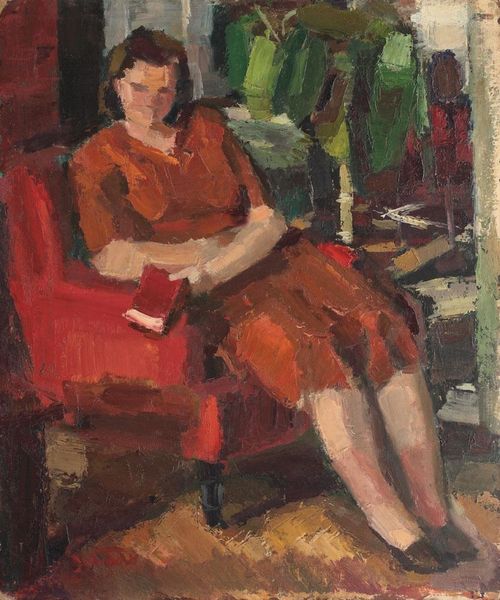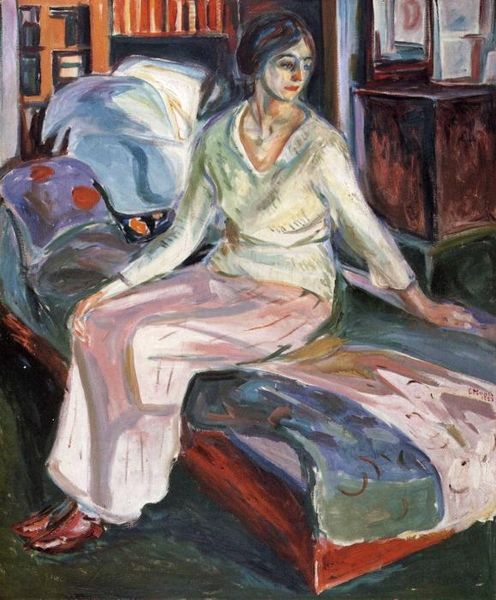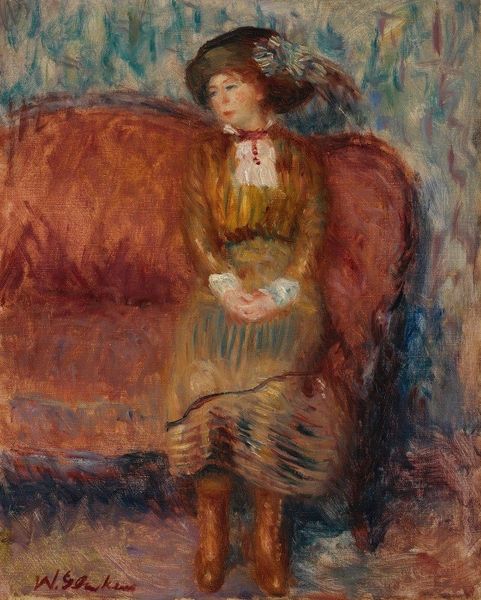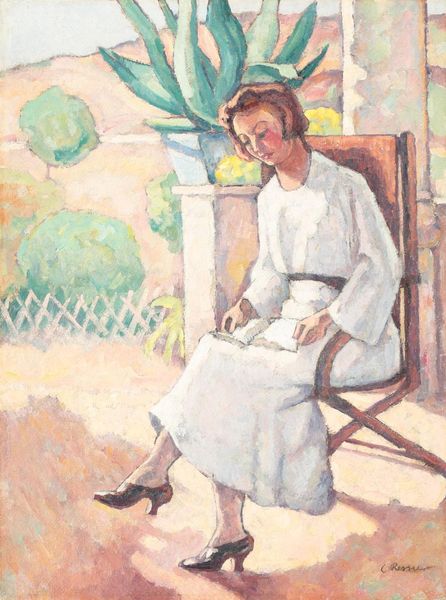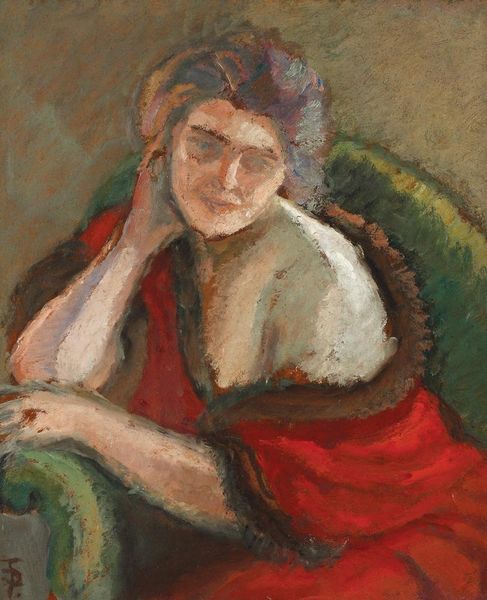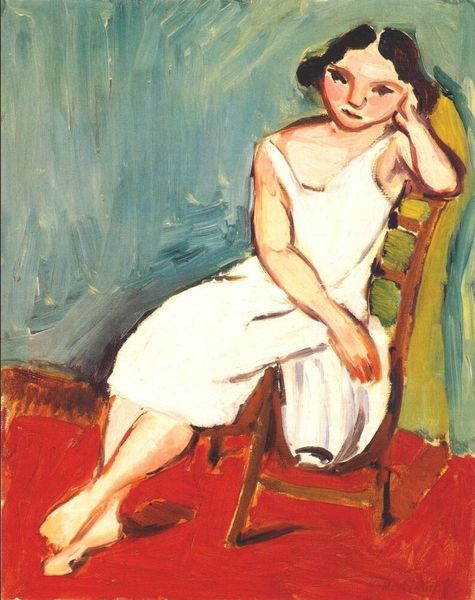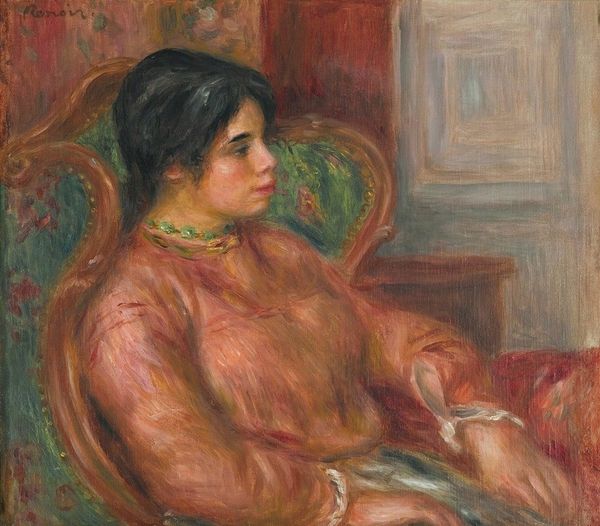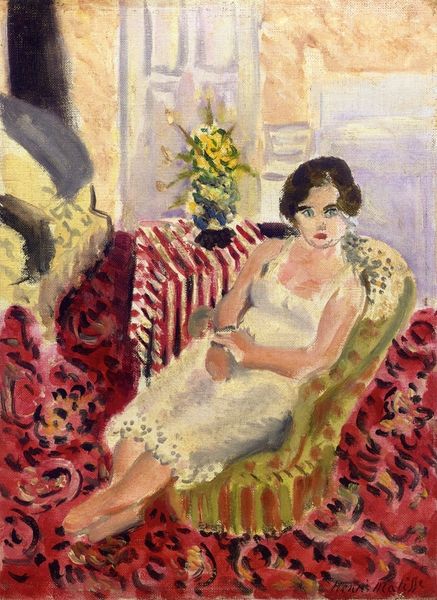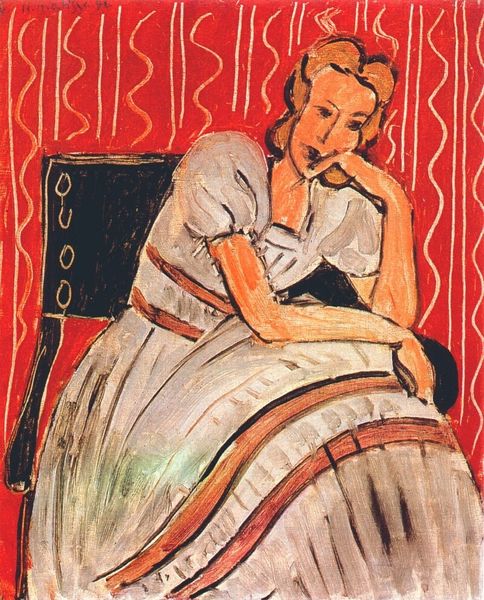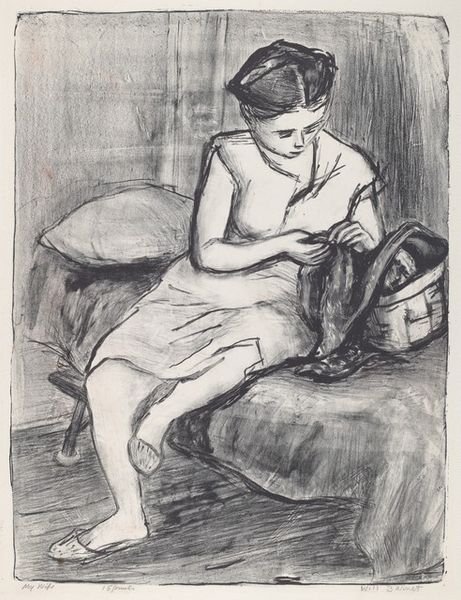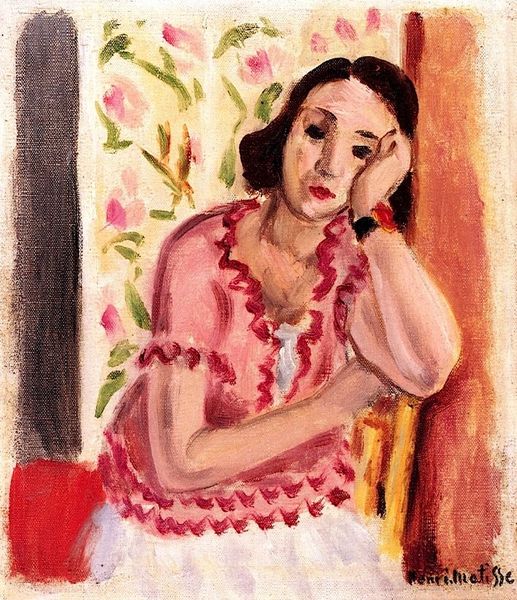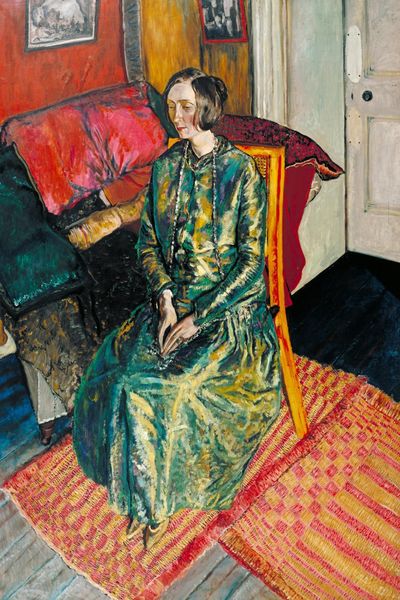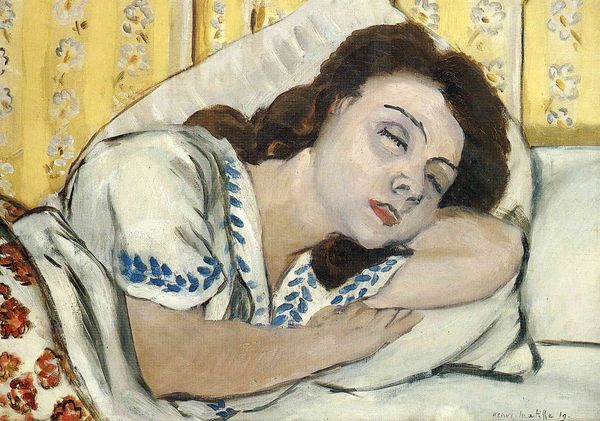
painting, oil-paint
#
portrait
#
painting
#
oil-paint
#
figuration
#
oil painting
#
intimism
#
portrait drawing
Copyright: Theodor Pallady,Fair Use
Editor: We're looking at Theodor Pallady’s "Interior din atelierul din Place Dauphine," created in 1934 using oil paint. There’s a thoughtful stillness about this portrait of a woman in an interior setting. How do you interpret this work? Curator: Well, on the surface, this is a typical scene of domesticity. However, Pallady, who lived and worked in Paris, was deeply aware of shifting gender roles of women. It's fascinating to consider the portrait through the lens of emergent feminist discourse of the interwar period. The figure appears both self-possessed and constrained by the very space that should empower her. Do you see any visual cues that suggest this tension? Editor: The light, maybe? The bright window behind her is in contrast to the shadows defining the interior of the atelier, or her own downcast gaze? Curator: Exactly. The studio becomes not a place of liberation, but perhaps an arena where the expectations of artistic expression collide with those of feminine domesticity. The very act of sitting for a portrait can be a site of resistance, freezing female identity beyond common visual tropes. Notice how she's not smiling and does not invite the gaze of the viewer. Editor: So you are saying that even the simple choice of expression for the portrait can imply that this is the painter representing his own understanding of a more active, less conforming female presence? Curator: Precisely. By showing her in this thoughtful, almost melancholic repose, Pallady perhaps invites a critical examination of how women were both seen and how they saw themselves within rapidly changing societal constructs. Considering these details offers an avenue to disrupt any singular reading that does not involve the agency of women in art history. Editor: I hadn’t thought about the agency of women represented as more than aesthetic subjects. Thanks. This portrait offers so much more to consider beyond its calm appearance.
Comments
No comments
Be the first to comment and join the conversation on the ultimate creative platform.
